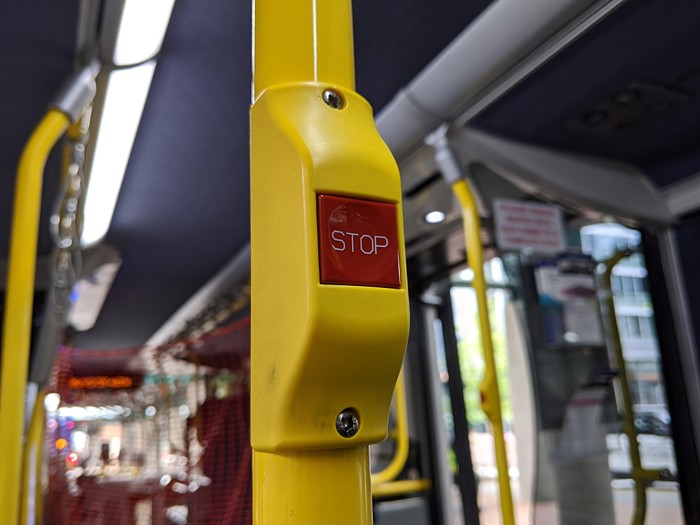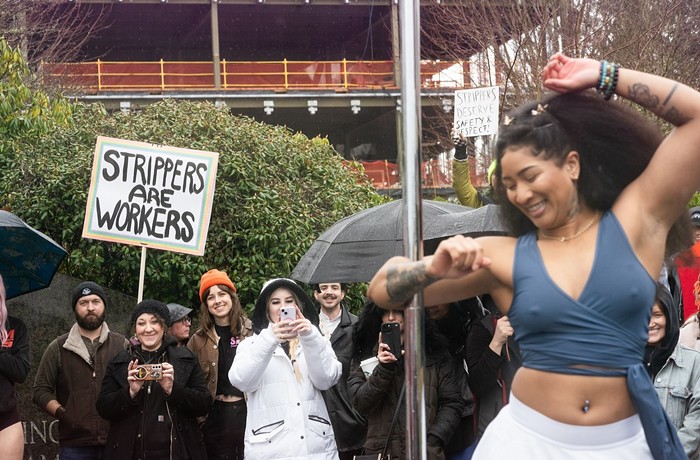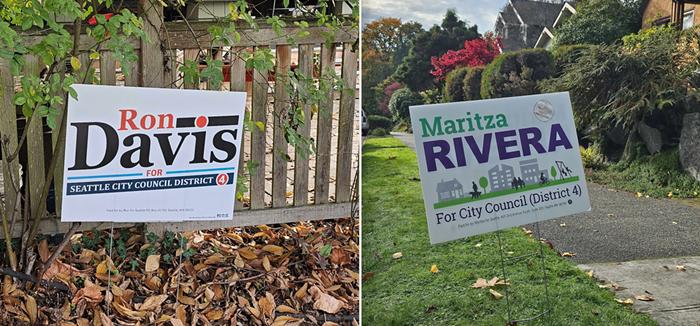Last week, however, Thiel was promoting something antithetical to his newspaper. Instead of spinning catchy turns of phrases about Huskies football, he was citing a list of grievances the employees of the P-I and The Seattle Times have about their respective newspapers. As a recently recruited spokesperson for the Pacific Northwest Newspaper Guild, Thiel stood across the street from the Times building on November 15 and talked to TV news reporters about the crappy salaries at both papers ("Times, P-I, Strike Threat," by Phil Campbell, November 9). As he spoke, a few hundred potential newspaper strikers flowed past him and began waiting for the rally to begin. A dash of surrealism was added to the scene when three black-clad guards ascended the roof of the Times building to glower down at the discontented employees. Times publisher Frank Blethen, it appeared, isn't shy about using intimidation tactics.
But last week was just the warm-up. At 12:01 a.m. on Tuesday, it became clear that neither a federal mediator nor two dozen negotiating sessions could bridge the chasm between P-I and Times management and rank-and-file newspaper employees. The unions called for a strike, and a giant news hole opened up in the sky above the city of Seattle.
"People are ready to strike," one anonymous Times reporter told The Stranger before a strike was official. "No one wants to, of course. But... we expect to get a good contract and we're willing to walk if we don't."
In the final days, it looked as if a resolution were possible. The unions--representing reporters, photographers, clerical aides, salespeople, and distributors--stressed their willingness to form a picket line, publish an online strike paper, and get the entire local labor community behind their effort to make the newspapers listen to reason. At the same time, however, the unions promised they would bend on the size of a pay raise--by far the biggest issue on the table. Sure, their demand for a $3.05-per-hour raise may be too much, but management's proposed 45 cents per hour is an insult.
On the management side, Times president Mason Sizemore was still publicly optimistic that a strike could be averted. He noted that the only issues left to discuss were "economic," and he tried to make it sound as if these concerns were not a big deal. Meanwhile, the Times and P-I prepared for the worst. Management for both papers geared up to publish a paper without staff help. And sources inside the Times say "jackbooted guards" suddenly began appearing around the building. Also, the paper put up security fences outside. Apparently, Blethen fears that his own employees may don black ski masks and treat Times property like a WTO-era NikeTown.
More than just money is at stake--union credibility is, too. At least four unions representing the various newspaper employees must keep a united front in the days ahead, a difficult task when workers are manning a picket line. For example, Teamsters Local 763, which represents hundreds of drivers, is trying to keep its negotiations separate from the newspaper guild and the other unions.
One former guild shop steward called the guild's strike gambit highly risky. The steward privately questions the union's strategy. Why didn't the guild first use smaller weapons in the collective bargaining arsenal? For example, why not have a reporter byline strike, where stories appear without writers' names? Why not use on-the-job slowdown actions that cause countless missed publication deadlines?
Guild administrative officer Larry Hatfield says the guild went for broke for one simple reason: to show power. "The bargaining just wasn't moving. And we didn't believe that a byline strike would promote movement," he says. Hatfield points to San Francisco, circa 1994, as a precedent for Seattle. The workers there claimed victory over The San Francisco Chronicle and the San Francisco Examiner. "That strike lasted 11 days, and we won big," says Hatfield, who participated in the strike. "Labor peace was restored in San Francisco; we got good wage increases; and we headed the [owners of the papers] off from trying to decimate the Teamsters union down there."
But there's another precedent that Hatfield fails to mention: Detroit, 1995-96. After 20 agonizing months of striking, workers punished both The Detroit News and the Detroit Free Press, and themselves as well. Hundreds of jobs were lost; both dailies lost thousands of subscribers; and the city went without local daily journalism for more than a year and a half.


















